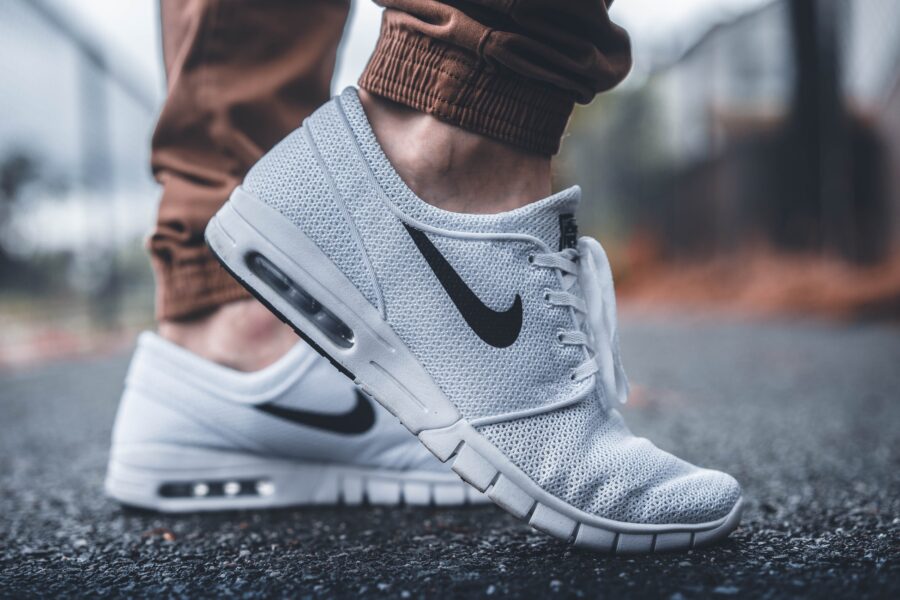The drill is real. You come across a pair of shoes that you just have to buy, probably for their glitzy fashion statement, only to realize that they are just too big for you. The glamorous footwear that had you smitten now has your feet slipping and sliding in the slightest attempt to walk.
Luckily you don’t have to stress over such small matters: we’ve all been there. And there exist proven hacks on how to make shoes smaller for a more agreeable fit. We hope these stunts and tips will save you from the underlying discomfort associated with wearing unfitting shoes.
Table of Contents
Here is How to Make Shoes Smaller
Replace the Insoles
If you own a pair of shoes that don’t fit great, then you might want to invest in some of the best insoles for high arches. First off, insoles refer to the soft pads placed inside shoes to enhance comfort, warmth, and support to the feet. They are usually made from different materials ranging from leather, foam, and gel.
Insoles are generally intended to provide reprieve for posture-related problems and discomforts. In addition, they come in handy in taking the extra space in shoes that are bigger across the length.
Full-size insoles can be a great way to make shoes fit smaller, especially for an all-around bigger shoe. Gel insoles are great for joint pains and shock absorption, foam insoles for a snug fit and general stability, and thermal insoles for warmth.
There are more generic insoles, including flat and cut-to-size types, but we prefer those that cater to the specific type of shoe you’re trying to shrink. You can also find insoles for flat and heeled dress shoes, shock-absorbing ones for sneakers, and even flip-flop footwear. All you need to do is buy suitable insoles and place them right in the shoes.
Using Heel Grips
If your shoes are pretty much perfect, but you’d like a slightly snugger feel, heel grips might be the way forward for you. It is a small padded strap that is simply secured onto the back of the shoes to provide support and grip during movements by shortening the length of the shoe. Plus, they also prevent the development of blisters.
You can find this life-saving solution in various materials, from gel to silicone, latex, and fabric. Whether you own a pair of flats that painfully dig into the back of your feet or some strappy heels that keep your feet sliding around, heel grips can be an affordable way to improve your fit.
Shoe Tongue Pads
Unless you’re among those who have low arch or instep, you’re likely not familiar with shoe tongues. These aren’t the sexiest shoe accessories, but they work wonders. Great for loafers, sneakers, oxfords, and more, tongue pad is a thick felt-like material that sticks onto the inside part of the shoe tongue.
Shrinking the Shoes Using Water
There are various types of shoes that you can shrink using water and leather conditioners. The shrinking process is made possible by the simple principle that air-drying wet shoes bring about the shrinking phenomenon that has been exploited for a long time.
However much this technique works, be sure to take care and do it in the right way. There’s actually a small risk of damaging your favorite shoes. For starters, get the shoes wet. Leather and suede shoes require a spray bottle, while casual and athletic shoes need to be soaked in water.
A while after, let the shoe sun-dry or force-dry them with a hairdryer in case of cloud cover. Keep the hairdryer in a low setting and not held too close to the shoes. Try putting the shoes on when dry. You should notice a slight difference as far as the fit goes. Note that you might want to repeat the process several times until you achieve the desired fit. Some people prefer drying the shoes while worn to avoid over shrinking them.
Stitching an Elastic Band Inside the Shoes
If you’re good with DIYs, then this hack will work for you. Else, you might end up damaging your shoes. The purpose of stitching an elastic band inside the shoes is to develop a tight fit by pulling together the inside of the heel area.
All you need is a thread, needle, and elastic bands to stitch on each of the shoes. Although any looser part of the shoes can be stitched, the inner portion of the heel area is best suited. Once you’ve stretched the elastic band in place, make sure it remains tight as you sew it all around.
Nonetheless, if you’re not handy with sewing, safety pins can be helpful in accomplishing the above process. After some time, remove the elastic band because as it stretches out, the loose part of the shoe is pulled together, resulting in a relatively smaller fit than before.
Consider Taking Your Shoes to a Professionals
We have nothing against DIYs, but sometimes these types of skills are better exercised by professionals. This is particularly the case if you’re dealing with an amazing shoe or high brand- something treasured, expensive, or very high quality. What’s more, you can have the cobbler fit the insoles, heel liners, heel grips, and tongue pads into the shoes for you.
The Bottom Line
Subsequent to altering the sizes of the shoes, keep in mind that the exterior dimensions remain the same. As such, you might want to maintain an appropriate walking posture when walking on these “big” shoes. Overall, learning how to make shoes smaller is a helpful hack and certainly not a bad idea. Besides, it increases your comfort and reduces the chances of sustaining injuries.

